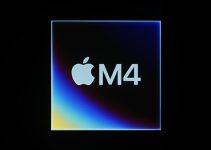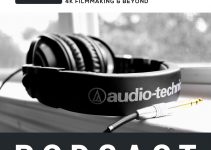It’s been a while since the first drones dropped on the market creating a small earthquake in indie filmmaking. Aerial photography used to be a prerogative of big-budget productions, often shot using helicopters, so the affordability of these small things that could fly and capture decent quality video almost intoxicated the market.
Every wedding and advertising had at least an establishing shot made from far above, now we’ve got used to that, and thanks to regulations, we’ve got a more occasional and reasoned choice of aerial shots. But what if you’re on your own and you’d like to start shooting some aerial footage?
Tech has been going forward by leap and bounds and now we have tiny portable drones that can fit in a fanny pack and shoot high-quality videos. The most known are the Mavic Air and the DJI Spark: both are made by industry leader DJI, and both have been compared by The Everyday Dad. So, which one will be the perfect fit for you?
The choice is tough since both are great drones and are with no doubt the best choices you could make if looking for a small beginner drone. It’s a fact that on the market there are no other competitors and that these drones are fighting one against the other, although that is quite odd if you consider they’re both from the same manufacturer. But what is it that sets them apart? Let’s see.
#1 – Price
As for every piece of gear you’re going to add to your basket, the price will be an important factor. For many filmmakers, that’s the only thing that matters! In this case, we have a huge difference between the two, since the Mavic Air is more or less $800 versus the $400 bucks needed to bring home the Spark, and both of them have a controller included (and a controller is a highly recommended optional!). That is almost double the budget, could the price difference be justified somehow? We need to investigate further to make a decision about that.

#2 – Portability
DJI has set a new standard to be achieved in portability with both these drones. It’s amazing how small they both can be, and how easy it is to pack them up, either in the hard case for the whole single-piece frame of the Spark or the softer and foldable frame of the Air. It boils down to personal preferences since both are unrivaled as for the easiness of packing.
#3 – Ease of use
Here we start to see some differences popping up. The cheaper Spark is a WiFi-only device, whereas the Mavic Air offers a tethered connection between the controller and the smartphone through a built-in OTG cable, thus granting a more stable signal exchange. WiFi connection is not bad per se, but it is an additional point of failure since a disturbance in the radio waves could lead to annoying difficulties.
#4 – Image Quality
The gap widens between the two. Even if they have the same sensor, a 1/2.3″ CMOS sensor, the cameras have different lenses with different apertures and field of view, but most of all, they have different image processors. What does that mean? Well, while the Spark is limited to a 1080p 30fps 24Mb/s recording, the Mavic Air can hit up to 4K 30p 100Mb/s, and that is having the same sensor! Amazing, right?
There is almost no drone on the market that can top that. Top recording quality aside, the Mavic Air has a better gimbal and different recording options besides the 4K: we can start to see where the price difference originates.
If you’re aimed to shoot footage with your drone that go beyond the family video and starts to become a professional content creation, then there is actually no choice, the Mavic Air is better. Period. If instead, your workflow is more amateurish, than the Spark is more than enough.
#5 – Battery life
The Mavic Air continues to show its more professional vocation. The battery is rated for 21 minutes, a full 5 minutes more than the 16min the Spark is rated for. That is a 30% increase, and a huge difference when flying these small drones. Beware that both the ratings are highly optimistic and are considering almost no hovering since that is the most energy-consuming slight status you can keep.
#6 – Durability
There’s no question to be made. If you are getting into drone flight, sooner or later you’ll crash your drone. You can’t escape. We’ve all been there, and it will happen again. But how hard of a beating can these two sustain before abandoning you?
It seems that both are allegedly pretty tough since there has been almost no report of crashing incidents that resulted in the destruction of ta drone. They both seem sturdy enough to resist more than some minor scratches, even if that’s not an excuse to go crush them around!
#7 – Miscellaneous
Now there’s a couple of nice features that the Mavic Air packs, that the Spark lacks instead. It’s not the active track nor the quick shot, those come on both. It’s the boomerang and the asteroid.
Both are nice and funny effects, but none of those is a deal-breaker when absent, the real gem is the obstacle dodging when active tracking. Amazing tool. On top of that, there’s real sensors and 8GB of onboard memory for when you forget to bring an empty card with you. If not any card at all!
So, what do you think about this comparison? It seems that even if being quite comparable the Mavic Air clearly has the upper hand. That is, however, only if you’re interested in that high image quality or those couple of functions. If you’re just stepping in this field and can be happy with a 1080p capture, then the Spark is more than enough for your needs, so just go for it!
[source: The Everyday Dad]
Order Links:
DJI Spark with Remote Control Combo (Amazon)
Disclaimer: As an Amazon Associate partner and participant in B&H and Adorama Affiliate programmes, we earn a small comission from each purchase made through the affiliate links listed above at no additional cost to you.



